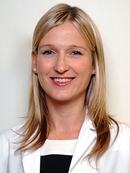Balancing the demands of work and family life is not easy for anyone, and radiologists with young families are no exception.
“Young physicians trying to gain their footing at work are often simultaneously starting their families, which creates external and family pressures that can affect career advancement,” said Kate Hanneman, MD, MPH, assistant professor, University of Toronto. “We know that work-family conflict is a major factor associated with burnout in physicians.”

Hanneman
For radiologists with young children, parenting often consumes time away from work, leaving little leftover for self-care and other wellness needs.
“With the addition of mobile technology and now that many of us have set up home reporting in the era of COVID-19, our work time can easily creep into our family time,” she said.
A recent survey published by the American Medical Association showed that 92% of physicians 35 years or younger felt work-life balance was important. However, only 65% felt they had actually achieved work-life balance in their careers.
“We know from other research that physicians are much more likely to be dissatisfied with work-life balance compared to other professionals, so this is a problem in medicine,” she said. “It’s also a gender issue.”
Although the number of women enrolling in American medical schools surpassed men in 2017, a gender gap still persists in radiology: women represent 27% of radiology residents in the U.S. A wage gap between male and female radiologists remains as well — and women with children are at an even greater disadvantage.
In another study, Dr. Hanneman reported a negative correlation between the perceived number of hours of work associated with a given specialty and the percent of female medical students that choose that specialty.
“A radiologist’s career path and advancement is exacerbated by parenthood,” Dr. Hanneman said.
To help reverse this effect, Dr. Hanneman said 12-week paid parental leave should be widely adopted.
The three-month leave is recommended by the American Academy of Pediatrics and is consistent with the American College of Radiology’s commitment to the radiologist’s well-being. There’s also a strong business case for paid leave. Dr. Hanneman cited benefits including employee retention, recruitment, engagement and productivity.
To help fund parental leave, she suggested looking at multiple sources, including practice groups, academic centers and disability leave. Equally important is addressing institutional policies that can plan for and support leaves through advance planning.
Another way to support radiologists with young children is providing the time and appropriate facilities for lactating employees. Flexible and alternative work opportunities are also important to working parents, both for managing their day-to-day work schedules and for taking advantage of career advancement opportunities.
Dr. Hanneman has this advice for radiologists striving for a healthy work-life balance: Get help, make your needs known and find a mentor.
“Don’t pass up important opportunities,” she said. “But also learn to say no when the opportunity doesn’t fit.”
For More Information:
View the RSNA 2020 session Work Life Balance for Radiologists with Young Families (Sponsored by the RSNA Professionalism Committee) — RC416 at RSNA2020.RSNA.org.
Kate Hanneman, MD, discusses the ways that radiologists can balance their work with the needs of their families, while also ensuring they take care of themselves.

